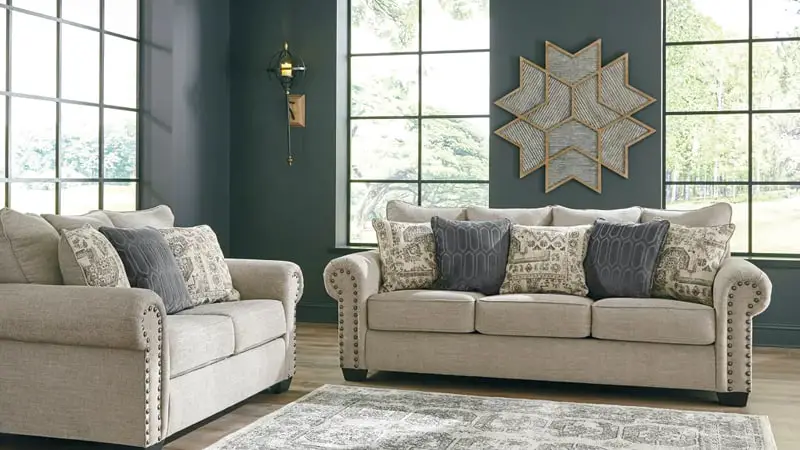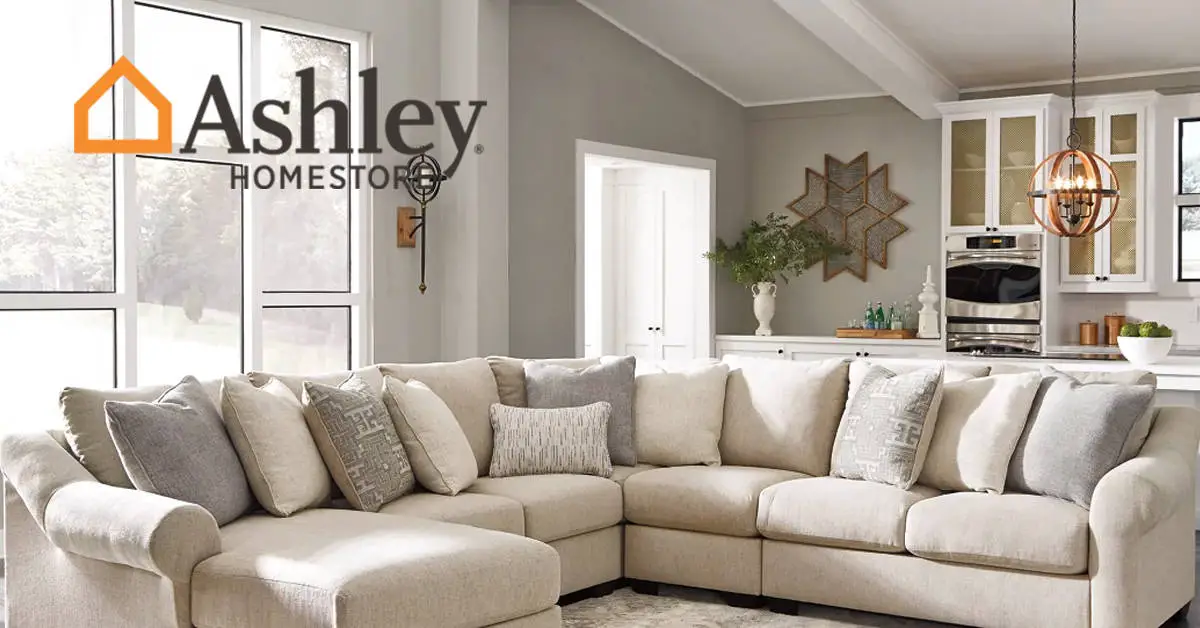Ashley Furniture, as a brand, is the largest retailer and supplier of furniture in the US. For such a company, maintaining profitability hinges on a good sales strategy and markups are a convenient way to increase profits from sales. Although their prices are affordable, what is the markup on these affordable furniture pieces?
The markup on Ashley furniture ranges from 80% to about 200%. This falls within the usual markup range of most furniture companies. Large markups play a major role in the major sales and discounts furniture stores usually offer; if you deduct the original cost from the inflated markup price, you can haggle for a good deal.
In this article, I explore what markup is and what the markup on furniture looks like. I’ve also discussed the markup on Ashley’s furniture and how it affects your bargaining opportunities. In conclusion, I look at what a good margin is for furniture businesses and how much profit they make.
What Is The Markup On Furniture?

Your phones, furniture, clothes, food, and even prescriptions all come with markups. Knowing how markups work gives you a better understanding of the actual value of a discount based on the actual price paid by the retailer. To maximize profits, most furniture sellers mark up their prices by roughly 80% (and occasionally up to 400%).
A markup is a difference between a product’s selling price and its entire cost. To calculate the markup percentage, you subtract the unit cost from the selling price, divide that figure by the unit cost, and multiply by 100%. For instance, if your product costs $40 to make and the selling price is $95, then the markup in percentage would be: ($95–$40) / $40 = 1.37 x 100 = 137%.
Manufacturers typically have pricing requirements that sellers must adhere to. One of them is the manufacture’s suggested retail price (MSRP), which is usually three times more than the wholesale price. There is also the minimum advertised price (MAP), which comes to a 50% markup.
While many major retailers have their furniture for sale at MSRP and then use the MAP for their “HUGE SALES,” a lot of online furniture stores sell their pieces at the MAP. When you think you’ve scored a sweet deal from a “huge sale,” you just bought it at the lowest price that they may sell. Don’t forget that besides profit, the markup also contributes to staff salaries, expenses, shipping costs, etc.
What Is The Markup On Ashley Furniture?
Like most furniture retailers, Ashley Furniture starts with a markup price of about 80%. With markups sometimes hitting 200%, you would do yourself a disservice if you don’t try to negotiate, even beyond the discount prices presented.
Let me put things in perspective with this example: with a markup of 300%, a couch priced at $1500 has a unit price of about $400-$600. The alpha codes on a tag might tell you what the unit price is. A 3 digit code probably means the product costs 3 figures!
What Is A Good Profit Margin For Furniture?
There is a difference between a markup and a profit margin. Margin is the cost of goods sold (COGS) subtracted from sales, whereas markup is a difference between a product’s selling price and its entire cost. To calculate margin as a percentage, divide the margin by sales.
A good profit margin will differ considerably from one industry to another. Following the general rule of thumb, a 5% margin is low, a 10% net profit margin is average, a 20% margin is considered high or “good.” If your margins are too narrow, you may not be making enough money to earn some profit and also cover the costs of production.
While furniture stores can turn over well over $1 million in annual sales, this industry has one of the smallest profit margins compared to other retail industries. Your wholesale profit may be about 40%. Regardless, most stores are glad to see a 2% net profit after covering payroll and operating expenses.
How Much Profit Do Furniture Stores Make?

Turning a profit is crucial to your business’s success and in order to make a good profit, you must set reasonable prices that factor in the costs of manufacturing and packaging your products. Charge prices that are a percentage higher than the costs incurred.
Although there is no set “ideal” markup percentage, most businesses use a 50% markup. Also called a “keystone”, a 50% markup means your price is 50% higher than the cost of the product (producing, packaging, etc.) Having this 50% markup on your products puts you in a safety net; it ensures that you are earning enough to cover the costs of production, in addition to a profit.
To make a profit, furniture stores buy furniture at wholesale prices from factories and retail them at higher prices. The larger the quantity retailed and the more people that buy the furniture, the more profit the store makes.
In 2017, the global furniture market was valued at around USD 331.21 billion and by 2024, they expect it to reach approximately USD 472.30 billion with a CAGR growth rate of about 5.2%. Last year, Ashley HomeStore Revenue was $3.3 billion USD and La-Z-Boy hit a US$1.52 billion revenue. That is a lot of money from the business of furniture!
Factors That Determine The Annual Profit Of Furniture Stores.
The factors that determine the profitability of a furniture store include:
- The location and size of the store. An area with a lot of people-traffic increases the chances of more people visiting your store. Store profit is also calculated per square foot!
- Its management style and business model.
- What brands it sells and the source of those brands.
- The related products and services it provides.
- It’s advertising and marketing strategies.
- The number of years it has existed.
Your profitability can increase. Knowing the factors that influence how much your store makes and working on or revamping your style can help you make more profit.

